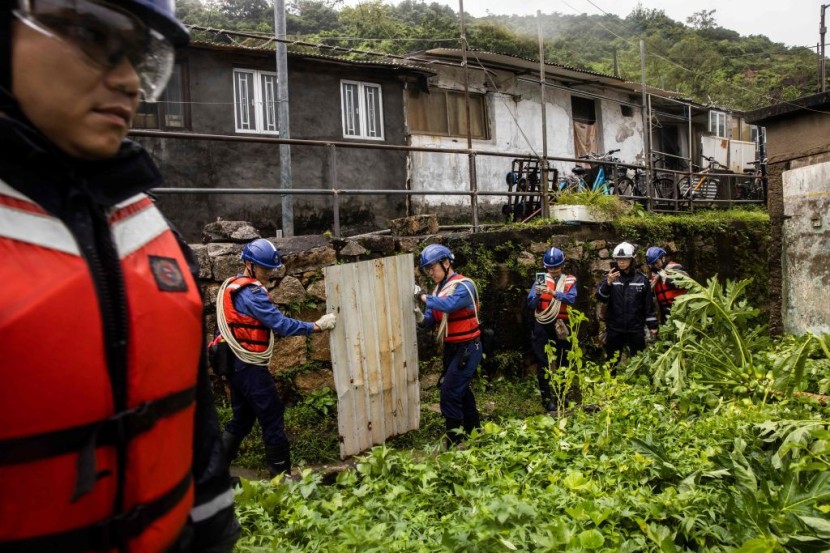
Typhoon Haikui made its first direct landfall on Taiwan in more than four years. As the powerful storm swept through the region, leaving a path of destruction in its aftermath, thousands of people were evacuated, and power was knocked out in several villages.
Winds with a maximum sustained speed of 137 kph (85 mph) and gusts of 173 kph (107 mph) accompanied Hurricane Haikui's arrival on Sunday afternoon, according to BBC.
Typhoon Haikui Ravages Taiwan in First Direct Landfall in Over Four Years
The typhoon struck the mountainous and sparsely populated southeastern region of Taiwan, unleashing heavy rainfall and disruptive winds that significantly impacted transportation services, cut off roads, and disrupted mobile connectivity.
Taiwan took precautionary measures in anticipation of the typhoon's arrival by suspending flights, rail transport, and ferry services, as well as canceling classes and outdoor events. Officials vehemently urged employees to remain at home, putting safety first.
About 4,000 people were evacuated from vulnerable areas, and residents were advised to avoid the water and not leave their homes unless essential. Taiwanese airlines proactively canceled all domestic flights for the day, and ferries to the surrounding islands were also temporarily suspended.
According to the Civil Aeronautics Administration, there were only 41 international flight cancellations reported on Sunday, indicating that the impact was less severe. Despite the potentially catastrophic nature of typhoons, Taiwan suffered comparatively few casualties during the storm's initial hours.
In the eastern county of Hualien, only two persons were reported to have suffered minor injuries when a tree fell on a truck. Fortunately, there were few additional reports of significant damage.
As Typhoon Haikui persisted along the coast of China, it was anticipated to move inland, prompting authorities in the Chinese city of Shantou, Guangdong province, to issue precautionary warnings. Haikui was significantly weaker than Typhoon Saola, which struck Hong Kong and the southern Chinese province of Guangdong just one day prior.
Tropical Storm Risk predicted that Haikui would make landfall in Taiwan as a typhoon of Category 1 or 2 strength, as per Independent.
China's Daily Routine Upended by Twin Typhoons
In some regions of China, the advent of these twin storms had already disrupted daily life. Numerous workers in numerous Chinese cities remained at home, and the start of the school year for pupils was postponed from Friday to Monday.
On Friday, trading on the Hong Kong stock exchange was suspended, leaving hundreds of travelers stranded at the airport as approximately 460 flights were canceled. The impacts of Saola's destructive force were felt in the city, a regional business and transportation center.
Despite these natural disasters, China's military continued to conduct operations aimed at intimidating Taiwan, a self-governed democracy that Beijing aims to subjugate by any means necessary.
The Taiwanese Ministry of Defense closely monitored the movements of Chinese military aircraft and naval vessels near the island.
Although there was no evidence that they had crossed the median line in the Taiwan Strait or entered Taiwan's air defense identification zone, similar incidents have occurred in the past, heightening tensions in the region, South China Morning Post reported.
© 2025 HNGN, All rights reserved. Do not reproduce without permission.








